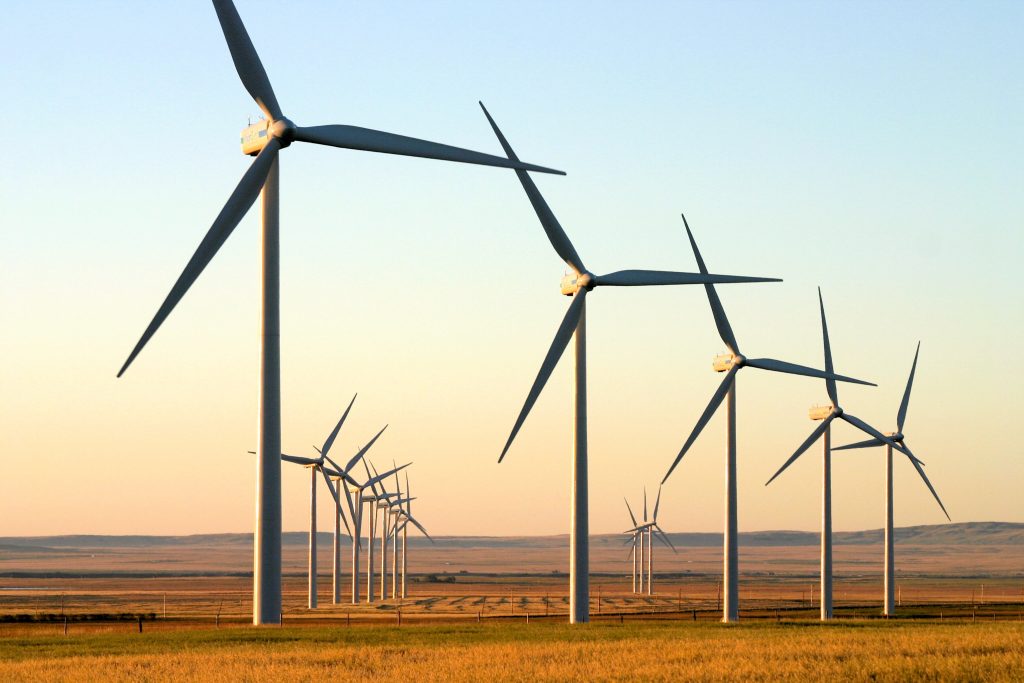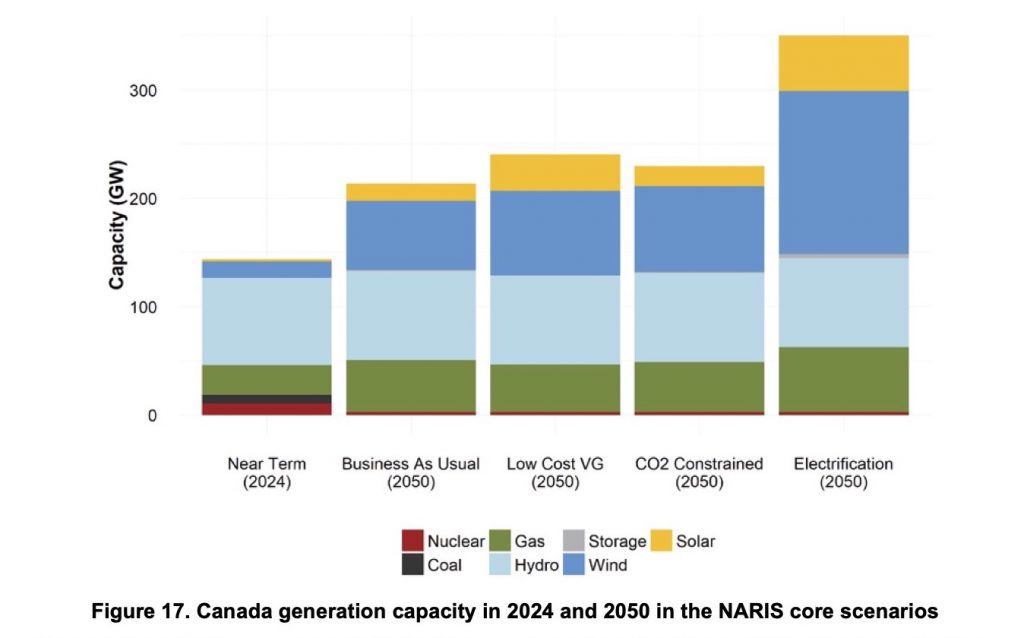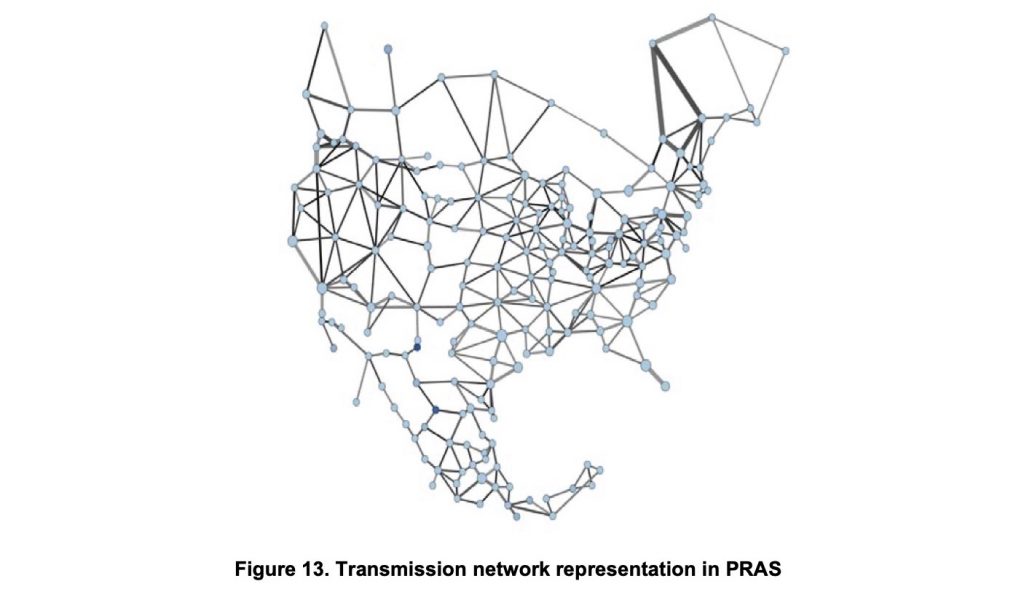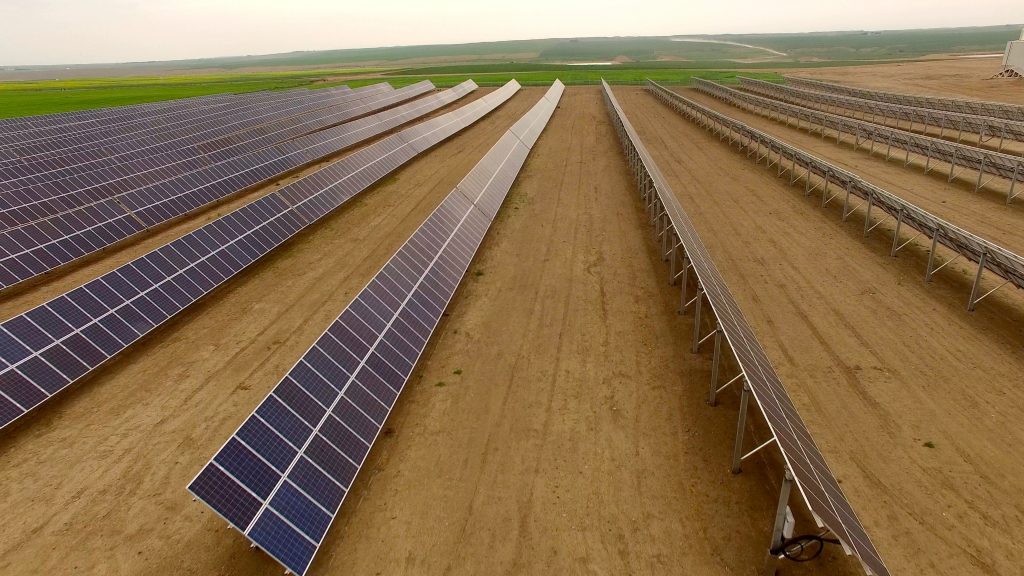By David Dodge, GreenEnergyFutures.ca
A five-year North American Renewable Integration Study found that up to 95 per cent of Canada’s electricity could come from renewables by 2050.
The study assumed in all four scenarios that hydro and nuclear will stay the same while wind and solar will support virtually all of the growth in electricity generation in Canada up to 2050.
“One of the big things that came out was this massive deployment of wind and solar, we’re talking 10-fold increases in what we have today at, in Canada,” says Phil McKay of the Canadian Renewable Energy Association (CanREA).
CanREA co-chaired a Canadian stakeholder committee from Canada which provided input into the study which was run by The National Renewable Energy Laboratory (NREL).

Sunny future for solar and wind
“It’s been touted as the largest geographical, a study of its kind, and it is looking at the integration of renewable energy,” says McKay of the five-year study.
In Canada, Windpower would grow 10-fold to between 78 to 150 gigawatts depending on the scenario, while solar would grow 18-fold, between 34 and 51 gigawatts.
The study was aimed at the cost optimization of the integration of renewable energy and perhaps surprisingly also found that electricity prices will go down, not up over time.
McKay says one seminal moment in the last five years was when Alberta and Saskatchewan secured the lowest prices in Canadian history for both wind and solar power.
The study also indicates there is tremendous potential for Canadians to participate in the clean energy revolution by installing their own solar on their homes and businesses.
The study says between seven and 32 gigawatts of rooftop solar could be installed on rooftops in Canada by 2050. The technical potential is enormous, but adoption depends on favourable local and provincial policies and prices. Alberta and Ontario have the greatest potential for rooftop solar.
CanREA estimates there are 40,000 rooftop solar systems in Canada today. For perspective, the NREL study is saying Canadians could install between 700,000 and three million rooftop solar systems by 2050.

When the sun doesn’t shine and the wind doesn’t blow
The NREL study says the system can balance supply and demand even with vast amounts of renewable energy through transmission, electricity storage, and flexible operation of all generator types including hydropower, wind, solar, and thermal (gas) generation.
What’s needed is a massive buildout of transmission to connect regional and national grids. “Increasing electricity trade between countries can provide $10 billion to $30 billion net value to the system.”
And interregional transmission expansion achieves up to $180 billion in net benefits at a cost of less than four per cent of the $5 to $8 trillion in total system costs, says NREL.
The net value of transmission is high in all four scenarios, but in the “electrification” scenario where demand for electricity surges thanks to electric vehicles and electric heating the net value is highest, meaning transmission can play a pivotal role in building massive amounts of solar and wind power.
In short interprovincial transmission maximizes the efficiency of a renewable grid at the lowest overall cost.
“So you see the sun hitting the east coast and the solar panels light up, and as generation increases, you can ship some of that west faster than the sun moves west,” says McKay. “And transmission can play that role.”
Historically provinces such as British Columbia have thumbed their noses at closer cooperation with Alberta which had the highest proportion of coal-fired electricity in Canada. But coal generation will be phased out by 2023 in Alberta and it’s one of the best places in Canada for wind and solar power development as evidenced by the boom going on there now. Construction has already begun on the 465-megawatt Travers Solar Project in southern Alberta.
The study suggests that regional transmission connections can make the system far more efficient.

Energy storage
Even assuming storage is low cost the study assumes it makes up a relatively small fraction of the overall capacity in 2050 in the scenarios. The study didn’t incorporate low-cost storage into the core scenarios. The cost has come down and continues to decline so it’s possible that battery storage may play a bigger role over time.
The study focused on using transmission to move power around to where it’s needed and works flexibly with the operation of all generation types including hydropower, wind, solar and thermal generation, to create a reliable grid.

Cost of electricity goes down over time
In modeling, the NREL study found the Levelized price of solar will continue to decline from $30 to $35 per megawatt-hour to between $10 and $23 per megawatt-hour depending on the scenario. Wind power costs will decline at similar rates.
The study focuses on the nitty-gritty of how grids work, how to maintain reliable power, and how to technically integrate boat-loads of renewable energy.
What it didn’t spend a lot of time on are the implications of electric vehicles aside from the increased demand for electricity in their “electrification” scenario. And the study spends scant time on grid management policies such as demand response, or the extensive deployment of smart grid technologies.
“Demand response” is industry jargon for managing when consumers use energy through pricing, incentives, and even smart grid technologies.
“This is acknowledged in the report as a next step,” says McKay. Smart grid technologies, smarter policies, demand response, and many other things weren’t played out in the study. The focus was on the cheapest way to incorporate massive amounts of renewable energy.

EVs, smart grids and policies – essential tools of transition
Electric vehicles (EVs) are a great example. Managing when EVs charge will be essential and potentially very beneficial in this new low-carbon world. Managing when EVs charge can reduce demand at peak times and use excess electricity at other times. Auto manufacturers have committed $300 billion dollars in investment to the development of more than 700 models of electric vehicles, mostly by 2025.
The small city of Summerside, Prince Edward Island in Canada installed a smart grid and five nodes in each home. They offered residents an incentive to switch from oil furnaces to electric, heat-storing units that can store up to three days of heat. With just 314 furnaces and smart water heaters installed and connected they flattened the curve on wind energy, enabling them to use all of the wind energy they were producing.
The big benefit of this giant trans-national study is the simple conclusion that the grid can be decarbonized into a lower cost, reliable grid of the future.
The study found carbon emissions can be reduced 94 to 95 percent in Canada and by 80 per cent across the continent.
And now the work begins, says McKay. “There’s a mountain of open-source data, which is now available to researchers, to policymakers, to the system operators. And they can start mining that and making the conclusions that they need to make an orderly and safe transition to a reliable [low-carbon] grid.”

